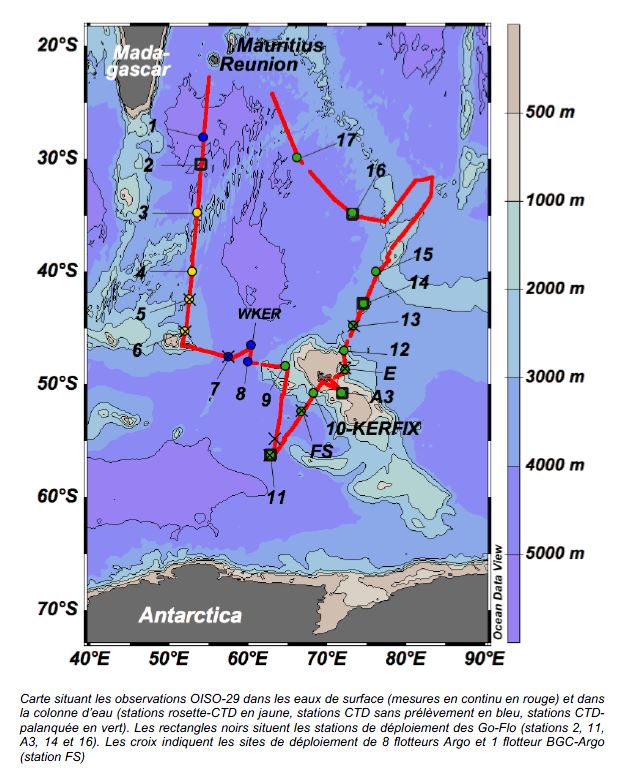VT 163 / OISO-29
| Type | Oceanographic cruise |
|---|---|
| Set | This cruise is part of the set OISO - OCÉAN INDIEN SERVICE D'OBSERVATION |
| Ship | Marion Dufresne |
| Ship owner | TAAF |
| Dates | 06/01/2019 - 15/02/2019 |
| Chief scientist(s) | LO MONACO Claire , METZL Nicolas  |
LABORATOIRE D'OCÉANOGRAPHIE ET DU CLIMAT : EXPÉRIMENTATIONS ET APPROCHES NUMÉRIQUES - UMR 7159 Institut Pierre Simon Laplace Boîte 100 4 place Jussieu 75005 Paris +33 (1) 44 27 32 48 |
|
| DOI | 10.17600/18000972 |
| Objective | The OISO cruises were initiated in 1998 with the objective of monitoring and understanding the evolution of CO2 in the ocean. Observations are collected once or twice a year onboard R.V. Marion Dufresne in the South Indian and Southern oceans. Such time-series data are crucial in order to:
The OISO-29 cruise aimed at pursuing observations in surface waters (underway) and in the water column (20 stations) along the route to the French Subantarctic Islands and in the Antarctic ocean. In addition to the monitoring of oceanic CO2 and ocean acidification, these observations will be used for the validation of data collected by 8 Argo floats and 1 BGC-Argo float deployed during the cruise, and for the programs REPCCOAI and THEMISTO. Another scientific aim of OISO-29 is the study of the response of phytoplanktonic community to atmospheric inputs of nutrients (N, P, Si, Fe) from volcanic and desertic origins, in contrasted biogeochemical areas: LNLC, HNLC, HN-LSi-LC (French program ITAliANO, LEFE-CYBER 2019-2020, PI C. Ridame). |

